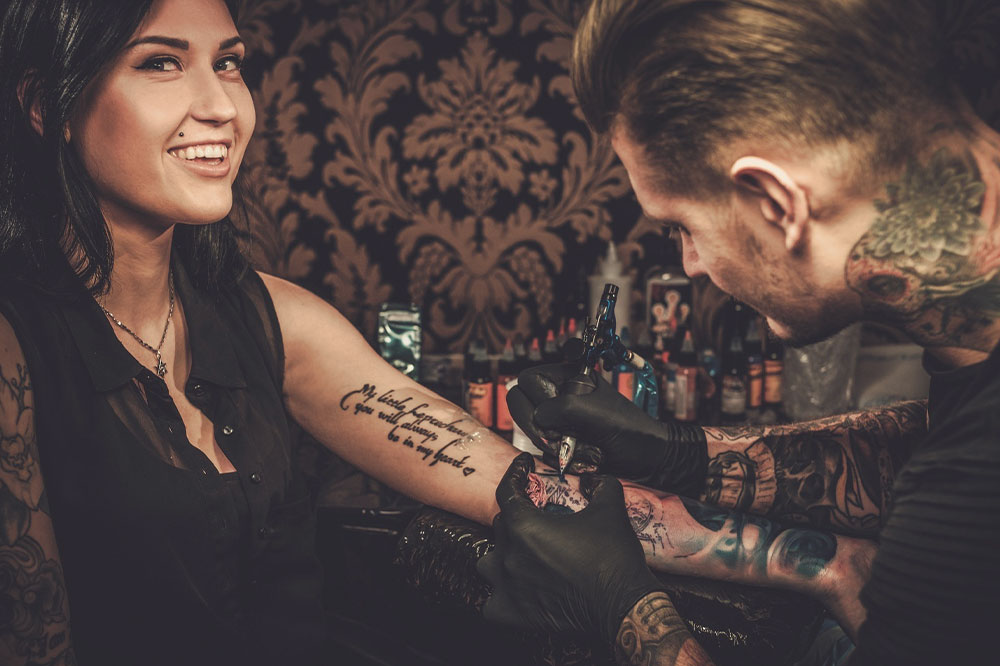Piercings and tattoos – Purpose, types, and risks
Getting a piercing or a tattoo requires a bit of consideration, especially when getting either one for the first time. You may have to learn about the details and safety of the procedure and its overall cost. Further, there might be some risks to consider. So, as you evaluate your top reasons for getting a tattoo or piercing, here is a look at everything you need to know about both forms of body modification.
Piercings and tattoos
Piercing and tattooing are forms of body modification and self-expression that have existed for centuries. Piercing involves using a sharp tool to make a hole in the body, usually to add a piece of jewelry to the ears, nose, eyebrows, tongue, lips, and navel. Tattooing, on the other hand, is a process in which ink is inserted into the skin to create a permanent design. The most common areas for a tattoo are the arms, wrists, chest, back, and legs.
Purpose
Here are some of the common reasons to get piercings or tattoos:
Self-expression: This is one of the key reasons to get piercings and tattoos, as body art allows you to create your own unique look and convey a message without saying anything.
Confidence boost: Getting a piercing or tattoo can boost your confidence, making you feel more attractive.
Personal growth: Getting a piercing or tattoo can be cathartic and serve as a form of personal growth. This can be especially true for those who get meaningful tattoos that remind them of a significant event or person.
If you decide to remove a piercing or tattoo, you can choose from a variety of methods. A piercing can be safely reversed by removing jewelry or using inverse pliers, but you should consult an expert before doing it yourself. For tattoos, laser tattoo removal is one of the most common techniques and can be less painful and more effective than other techniques like dermabrasion, excision, and skin grafts. Regardless of the technique, the availability of tattoo or piercing removal options can help you correct mistakes and even modify the design or piercing.
Popular types
From small, delicate designs to bold, intricate artwork, you can choose from many types of tattoos and piercings. When deciding the type of body art you would like, it is essential to consider what the style and design represent. Here are some of the common types:
Tattoos
Traditional: Here, you can expect timeless tattoo designs featuring bright colors, bold lines, and iconic symbols like skulls, anchors, and roses.
New school: These creative designs often feature exaggerated cartoon-like elements, vibrant colors, and bold shapes.
Tribal art: The tattoo designs here can consist of elaborate patterns and traditional tribal symbols, but they may incorporate modern elements.
Minimalist: These subtle designs are ideal for those who want simple and tiny tattoos with hidden meanings.
Piercings
Surface piercings: These piercings go through the top layers of the skin, allowing a piece of jewelry to be worn without being too intrusive.
Cartilage piercings: Here, the hard cartilage around the ear is pierced.
Navel piercings: Belly button piercings involve piercing the top layer of skin around the navel area.
Tongue piercings: This piercing goes through the center of the tongue.
Risks
While licensed professionals ensure safe piercing and tattooing procedures, learning about the risk is crucial when choosing the right artist and studio. So, here are a few potential piercing and tattooing side effects to consider:
Infection: Piercing and tattooing can increase the risk of skin infections if not carried out in a sterile environment or using sanitized tools. In addition, dirty jewelry can also cause infection. So, you should thoroughly research the studio and artists you have selected and ensure their safety protocols are up-to-date.
Pain and discomfort: Body modifications can be painful, although some find the discomfort more manageable than others. Pain levels can vary depending on the area of the body being modified and the size and complexity of the design.
Allergic reactions: Although rare, it is possible to have an allergic reaction to the dyes used in tattoos and the metals used to pierce the skin. You should discuss any allergies you may have with the artist beforehand.
Scarring: Getting a tattoo or piercing may leave behind a scar. If you choose to get a tattoo, consider booking an experienced artist who uses top-notch tools, as this will reduce the risk of scarring.
Regret: The permanence of tattoos and piercings is their most appealing quality, but it can also be a drawback. It is possible to regret the decision later, especially if the booking was impulsive and the design didn’t turn out to be as expected.
So, you must look up the piercing and tattooing services before making an appointment. Also, ask about safety protocols and aftercare instructions, and ensure you are comfortable with the artist before the procedure begins.

